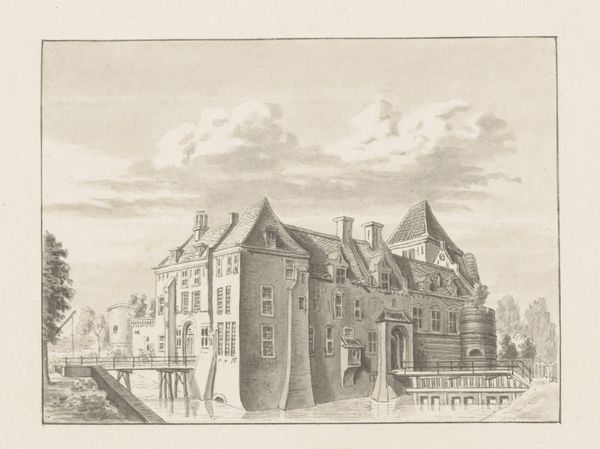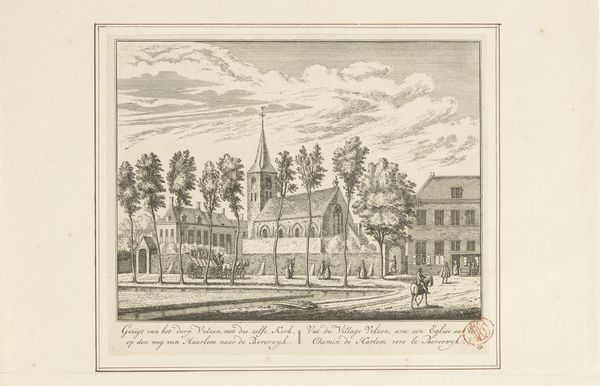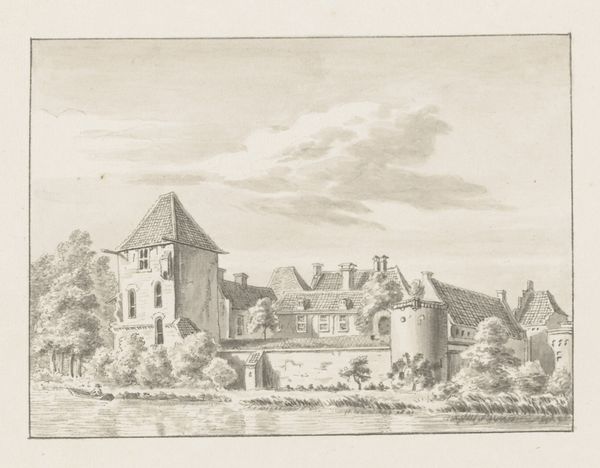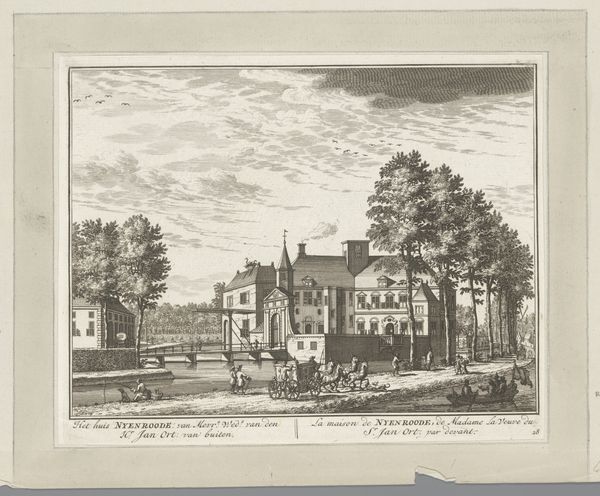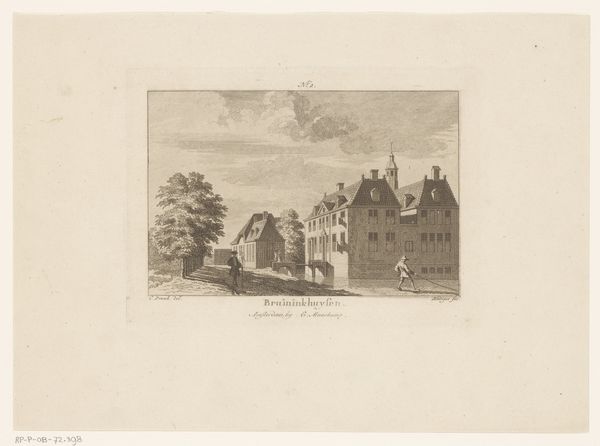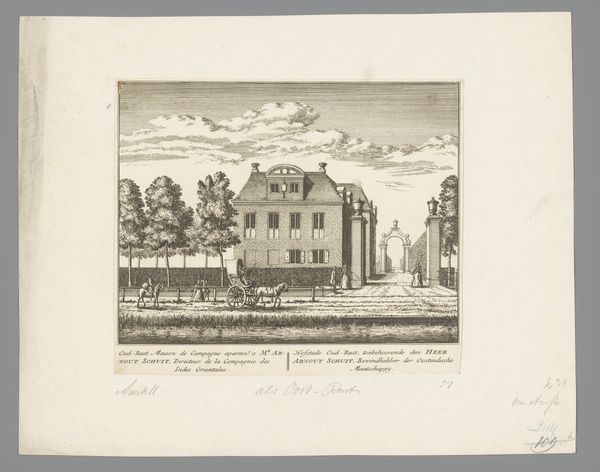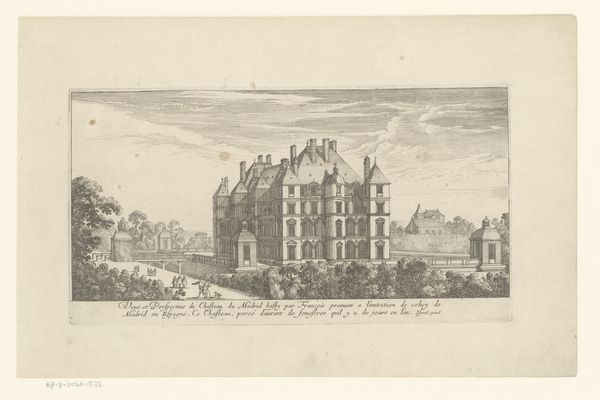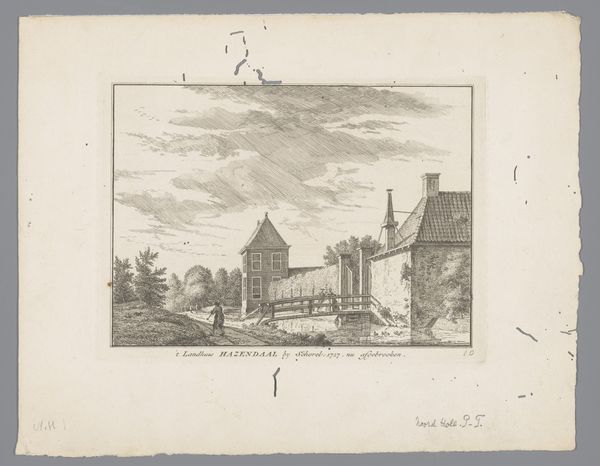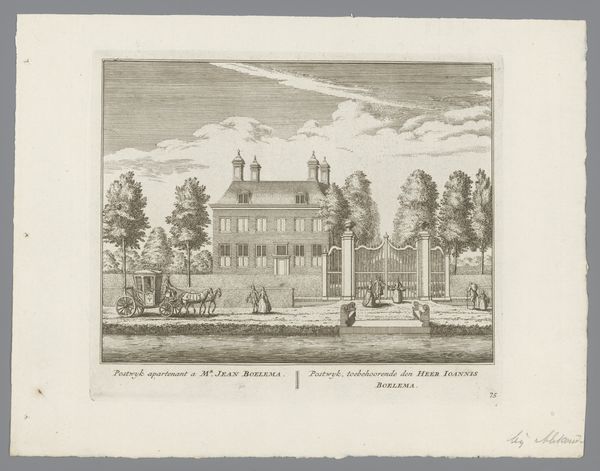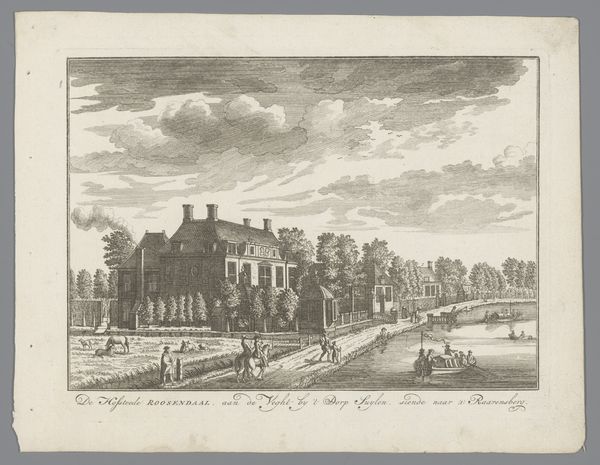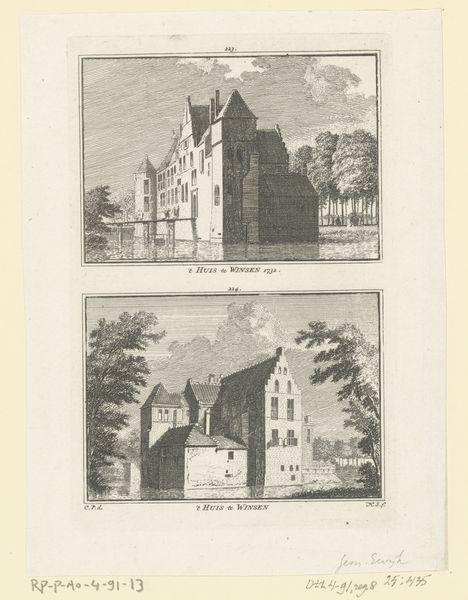
Dimensions: height 87 mm, width 109 mm
Copyright: Rijks Museum: Open Domain
Editor: Here we have Hendrik Spilman’s “Gezicht op Kasteel IJsselstein,” made sometime between 1750 and 1792. It's an engraving, a very precise and detailed rendering of the castle and its surrounding waterways. The scene has a certain formality, but it's also peaceful, even pastoral. What stands out to you, looking at it now? Curator: This print, at first glance, seems a straightforward depiction of a physical space. But consider how buildings like this become vessels for collective memory. Do you notice how Spilman meticulously renders each brick, each window? This isn't just about architectural accuracy, it's about encoding the enduring presence of power and history. The castle looms large, but its reflection shimmers in the water; do you think this juxtaposition intends to soften its strength or to signify it? Editor: I hadn't thought of the reflection that way, more like an artistic flourish. So you are saying, because it is an important structure for its inhabitants and country that, the engraving intends to emphasize a longer-lasting sense of importance through the material's appearance? Curator: Precisely. Furthermore, think about what a "castle" signifies, in this context and era. What symbols of authority are present, and how would they be received by the viewer of that time? How does it sit in contrast to its natural environment? Are they at war with each other or are they coexisting? Editor: It feels less imposing than I would have expected, to be honest, more integrated into the landscape. Is that a common element of Dutch Golden Age landscape painting? Curator: Indeed! Landscape and architecture in this period can speak to an ideal of cultivated order and national identity. And printmaking allowed for wide dissemination of this carefully constructed image. Consider the act of replication itself as part of its power. It also makes me consider how different groups of people at this time could experience its emotional implications. Editor: That’s a good point; it's not just about what's *in* the image, but how it’s distributed. I’m seeing this piece in a totally new light. Thank you! Curator: My pleasure, looking at how enduring architectural images act as symbolic and literal frameworks is always time well spent.
Comments
No comments
Be the first to comment and join the conversation on the ultimate creative platform.
